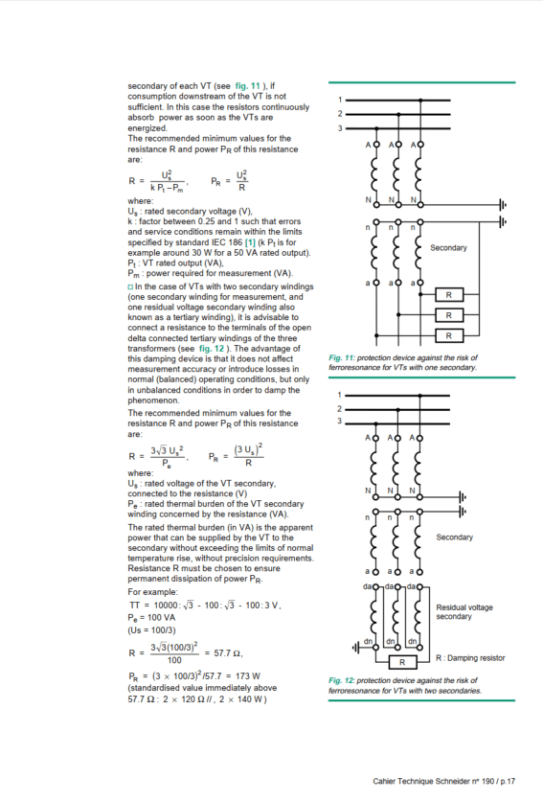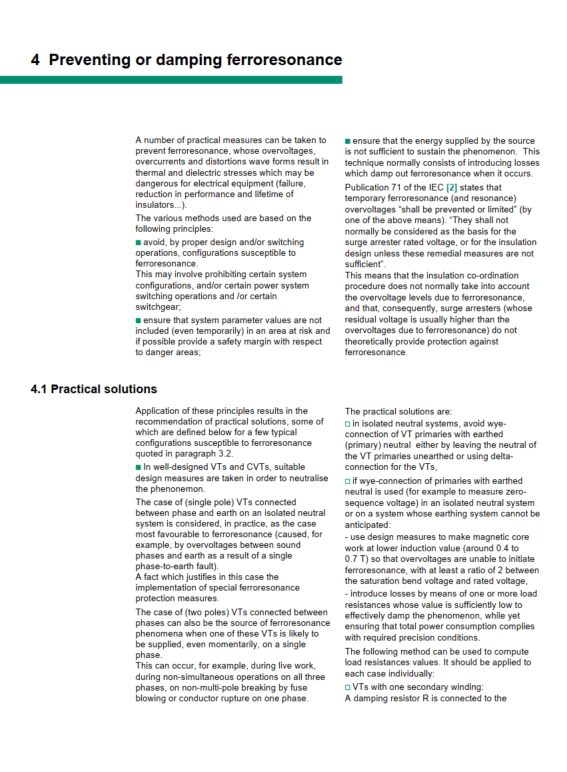Coco_HueHueHue
Electrical
Hello,
I am working on modifications onto an old protection panel.
There are 80 ohms resistors in parallel (Y-G) of the Y-G / Y-G PTs secondary on each phase (primary is 3ph/3wire 25kV and directly connected to the utility). This is mentioned as ferroresonnance protection and it makes sense. The old mechanical voltage relays are being replaced with a new SEL-751 relay and I have seen that setup in the past. Does someone know if the resistors are still needed? Can the digital relay compensate for that and prevent ferroresonance or if the relay technology has zero effect and the resistors are still required?
I didn't work much with MV in the past (more LV only) and I don't want to remove the resistors if they are necessary, but I sure want to throw them in the bin if they are not!
Thank you!
Coco
I am working on modifications onto an old protection panel.
There are 80 ohms resistors in parallel (Y-G) of the Y-G / Y-G PTs secondary on each phase (primary is 3ph/3wire 25kV and directly connected to the utility). This is mentioned as ferroresonnance protection and it makes sense. The old mechanical voltage relays are being replaced with a new SEL-751 relay and I have seen that setup in the past. Does someone know if the resistors are still needed? Can the digital relay compensate for that and prevent ferroresonance or if the relay technology has zero effect and the resistors are still required?
I didn't work much with MV in the past (more LV only) and I don't want to remove the resistors if they are necessary, but I sure want to throw them in the bin if they are not!
Thank you!
Coco


